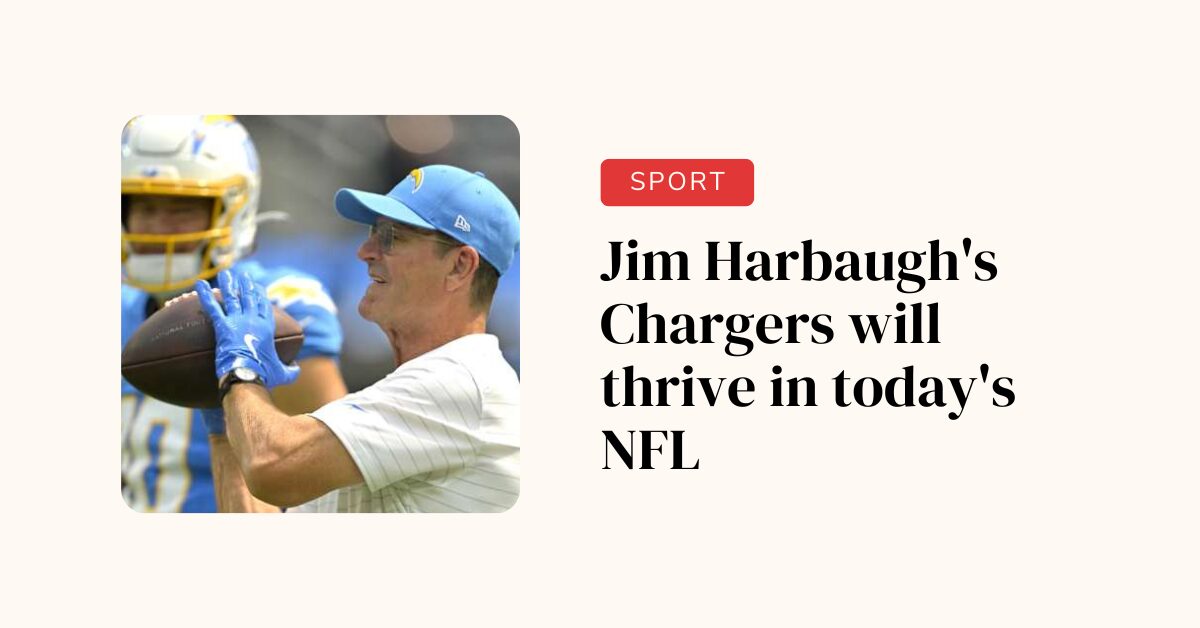Former NFL player and scout Bucky Brooks knows the ins and outs of this league, providing keen insight in his notebook. Today’s installment covers:
- How concerned should we be with Marvin Harrison Jr.’s disappearing act?
- New day in NOLA? Assessing Klint Kubiak’s debut as Saints offensive coordinator.
- But first, a look at one head coach who’s right at home in today’s NFL…
When Jim Harbaugh left the NFL following the 2014 season to take the job at the University of Michigan, the league was becoming increasingly pass-happy. Over the past few years, though, the pro game has shifted back in the direction of teams that can run the ball.
While the “three yards and a cloud of dust” approach makes some observers cringe, many of the most consistent teams in the NFL today rely on a punishing ground attack to spark success in the regular season and beyond. Last season, 11 of the 14 playoff participants finished the regular season ranked in the top 15 in rushing yards, with three of the four teams that made it to Championship Sunday (the 49ers, Lions, and Ravens) boasting top-five run games.
This transition away from air dominance continued in the opening week of this season: Per NFL Research, teams combined for just 6,026 net passing yards league-wide, the lowest total in a Week 1 since 2000 (5,824) and more than 2,400 yards fewer than the all-time high (8,440 in 2019). Just two quarterbacks — the Rams’ Matthew Stafford and Dolphins’ Tua Tagovailoa — hit the 300-yard mark last week, the lowest Week 1 total since 2005.
Harbaugh’s last NFL season in San Francisco ended with his 49ers missing the playoffs (despite ranking fourth in rushing), but he just led his alma mater to a national title behind a bruising ground attack. With the NFL embracing the run game once again, Harbaugh returns to the league with a blueprint that should translate into immediate success for his Chargers.

Gauging Marvin Harrison Jr.’s dud debut
When the Cardinals selected Marvin Harrison Jr. fourth overall, he was widely seen as the WR1 of the 2024 NFL Draft. In Arizona, it looked like he was going to be a Larry Fitzgerald-type playmaker poised to produce monstrous numbers from the jump.
But then, in the Cardinals’ Week 1 loss to the Bills, Harrison finished with… one catch for 4 yards on three targets.
That’s an eyebrow-raising stat line for a receiver billed as one of the most polished and pro-ready players in the rookie class. So, what the heck happened? I dug into the game tape to find out. And I can say it’s too soon to hit the panic button on Harrison and the Cardinals’ offense, because play calls, coverage, and faulty execution were to blame for last Sunday’s disappearing act.
Schematically, Arizona was stymied by a Buffalo defense that prioritized limiting Harrison’s impact. Bills head coach Sean McDermott clearly instructed his defenders to keep eyes on No. 18; their awareness of the rookie pass catcher’s whereabouts appeared to be part of a strategy to force the Cardinals away from the No. 1 option in the passing game.
The Cardinals likely expected some double coverage or loaded-zone tactics to take Harrison away on key downs, but Petzing said he was “a little bit surprised” by how much Buffalo focused on the rookie. Now, Petzing must develop an effective plan to counter the extra defensive attention that will go toward his team’s top target.

Saints marching under Klint Kubiak
The Saints’ offense fell off in the post-Drew Brees/Sean Payton era, but it looks like new offensive coordinator Klint Kubiak has reworked a stale playbook to add some sizzle to a unit that features a cast of underappreciated playmakers with home-run potential.
In Kubiak’s New Orleans debut, the Saints smashed the division rival Panthers, 47-10, with the offense racking up 379 total yards utilizing a balanced approach (199 yards passing, 180 rushing). Derek Carr completed 19 of his 23 throws for 200 yards and three touchdowns, while Alvin Kamara had 20 touches for 110 yards and a score. In a winnable NFC South, New Orleans suddenly looks like a playoff contender again. Utilizing heavy doses of pre-snap shifting and play-action passes, the Saints were able to keep the Panthers on their heels with a game plan laced with misdirection. The constant movement diverted the eyes of Carolina’s second- and third-level defenders, leading to big-play opportunities for explosive weapons like Rashid Shaheed

